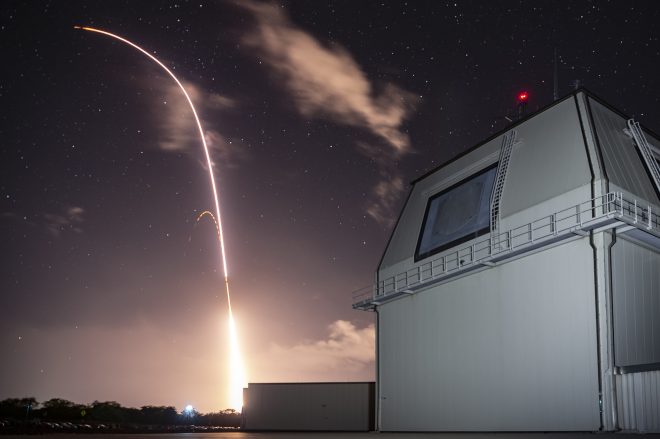Yes the US LHD are larger and can accommodate the aircraft as a permanent establishment, the conops for the ADF is to act unilaterality are as part of a coalition, the ADF LHD's have no aircraft permanently part of the LHD establishment its all about the risk and operational factor for aircraft deployed. Peopled need to start thinking terms of the UK TAG but on a smaller scale the assets will remain RAAF giving the ADF the abilty to forward deploy under different scenarios one option is self deployment using AAR another option is via the LHD
The US declined to have direct support to the ADF in the first few days the Americans expected the ADF to act independently which might be also the case in the future, having the ability to accept different types of aircraft in direct support organically should in my view be a priority, not going to be a good look if the task group was in-transit and had taken a hit because the RAAF could not keep a coverage over the task group, the whole point of a submarine force in limited numbers is to have red force use more logistics to counter, same could be said of a few F35 on a LHD red forces would have to think again. no one is expecting it to function as a fleet carrier but it should have assets available to it to achieve mission success in different levels of threat against it.after all it is a high value target
A few F-35B's on an LHD would not, IMO, have anything resembling the impact that some seem to think it would. I would suggest that given gov't as well as various defence think tanks and defence service/industry members also have not really raised the possibility of F-35B's aboard as being viable, then perhaps advocates for the idea are missing some pieces.
From my POV, a half-dozen F-35B's aboard an LHD could add a bit to the potential CAS/strike capability of an F-35 (and thus the value as a target), but would add little to the defensive capabilities of an LHD, or any task force the LHD was a part of, unless there are other assets which the RAN does not possess, were also present. A half-dozen F-35B's would be hard pressed, and more likely find it impossible, to maintain a persistent 24/7 two-ship CAP around the LHD/task force. Going further, even if a two-ship CAP was airborne, the F-35 is not equipped for the sort of volume air/sea radar search and tracking that proper AEW&C or AWACS aircraft are. This in turn means that in order for embarked F-35B's to provide useful air defence vs. an inbound maritime strike, several specific circumstances would need to fall into place correctly.
These are;
- Sufficient F-35B's would need to be embarked to provide a sufficiently sized response package
- Enough F-35B's would need to be aloft at the time when the response package was needed
- An F-35B or other asset would need to have a sensor of sufficient capability (range/sensitivity, etc.) pointing in the correct direction to detect the inbound strike, while it was still far enough out to be intercepted.
Absent all the above happening, then an inbound maritime strike would have to rely upon the sensors aboard TF ships tasked with providing area air defence, and if the strike package was AShM it would likely arrive before even hotpad F-35B's could launch.
As a side note, both the Spanish and Italian navies have different capabilities and force structures from the RAN, and IMO it is wrong to look at what those navies are doing and assume that the RAN could do is as well, without making some potentially significant changes. For one thing, the Italians have a dedicated carrier in service, in addition to the upcoming LHD (the Italian LHD is larger than a RAN LHD...) so some of the training needs are already being covered, and the LHD could potentially draw upon air support from their carrier. Both Spain and Italy operate heli-bourne AEW capabilities from their ships, so can provide some of the needed sensor footprint which is necessary to really queue a CAP. As for the Spanish LHD... while the design is similar to the RAN LHD, the more I have looked into it, the more I see where changes were made so that the RAN and Spain LHD's are not interchangeable.
Per the RAN website's page on the Canberra-class LHD found
here, the LHD in RAN service has flight deck landing space for six medium helicopters or four CH-47 Chinooks. The hangar of the LHD can accommodate up to eight medium helicopters, or a total of 18 if the light vehicle deck is also used.
Per a translation into English for the Spanish Armada's page on the Juan Carlos I LHD found
here, the JC I has the capability to operate up to 30 medium and heavy helicopters for amphibious operations, or 10/12 AV-8B+ or F-35B, and a similar number of helicopters, if operating in an aircraft carrier configuration.
What that strongly suggests to me, is that Spain's JC I LHD has a greater capacity for aviation operations than the RAN LHD's do, since the JC I can operate over 50% more helicopters than a
Canberra-class could, if the RAN used both the hangar and light vehicle deck.
Without even getting into what the costs would be to achieve some of what has been suggested, or looking at what current ADF capabilities would have to either be given up, or at least for the mission be unavailable, it seems wrong to assume that the RAN ships which are different from the Spanish, have the same specific capabilities.




